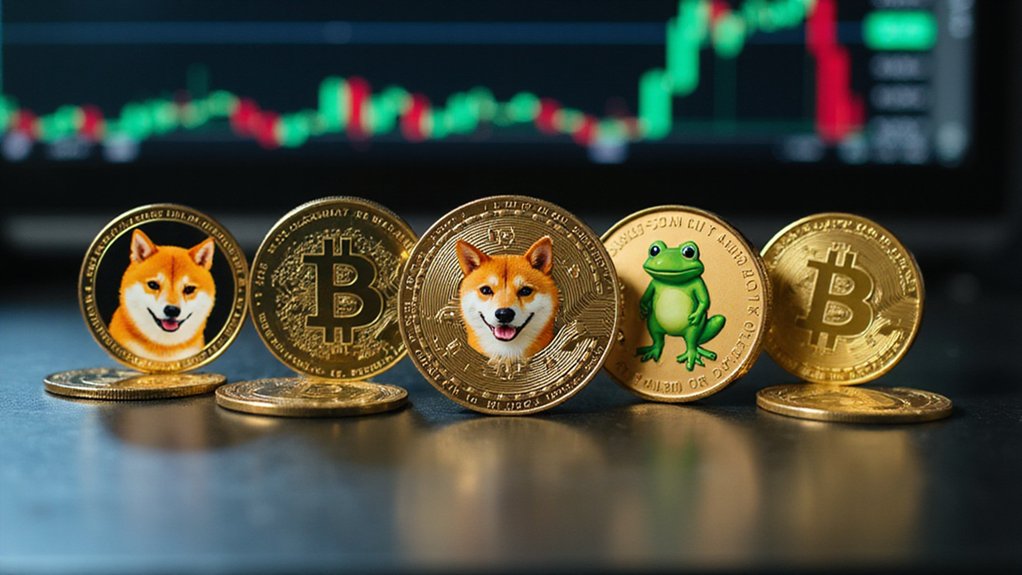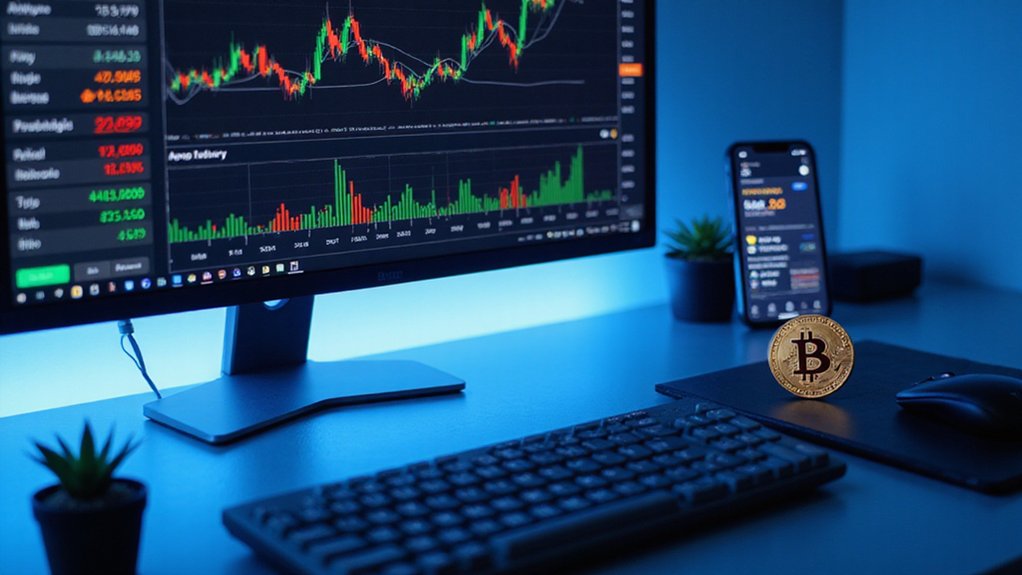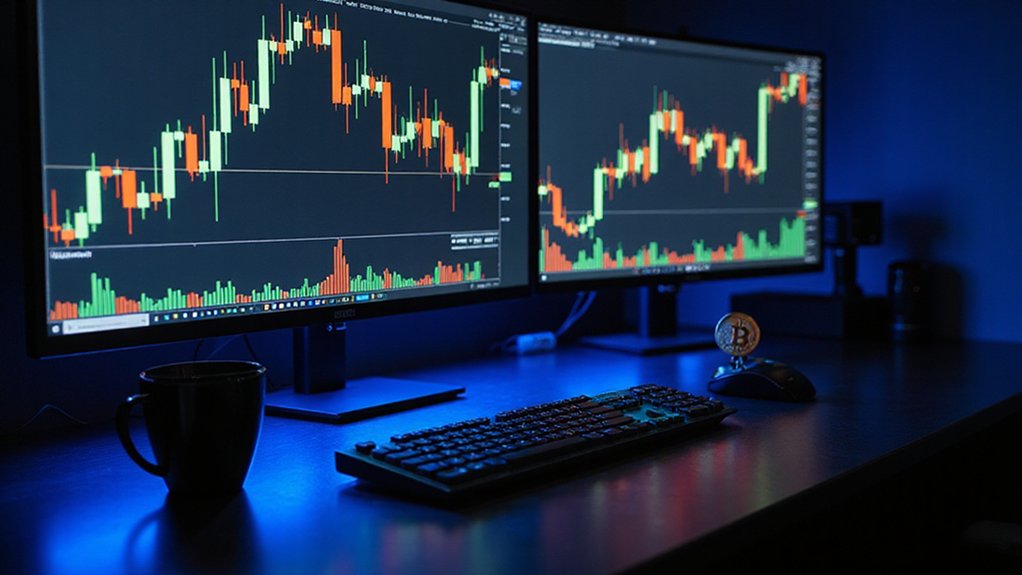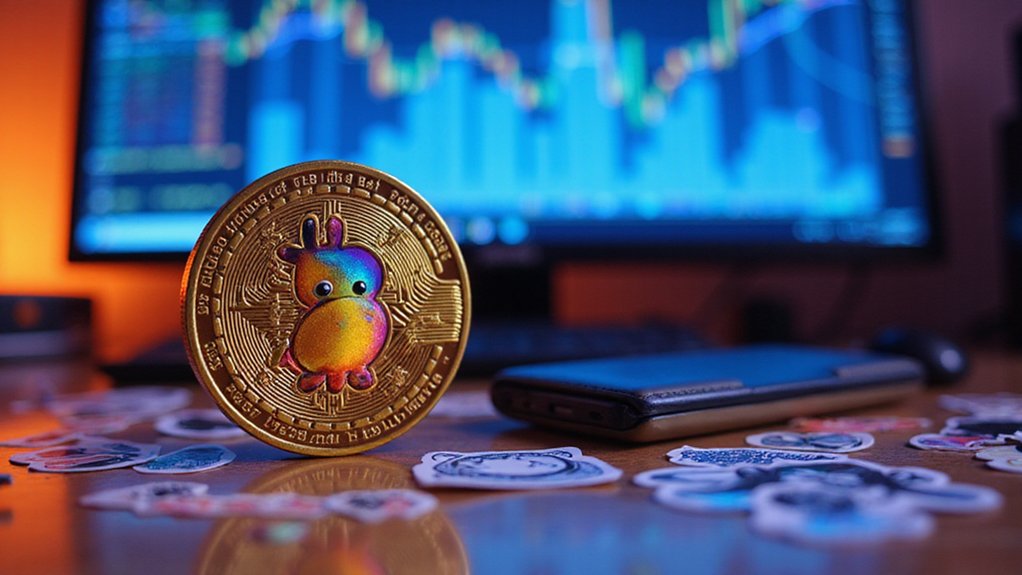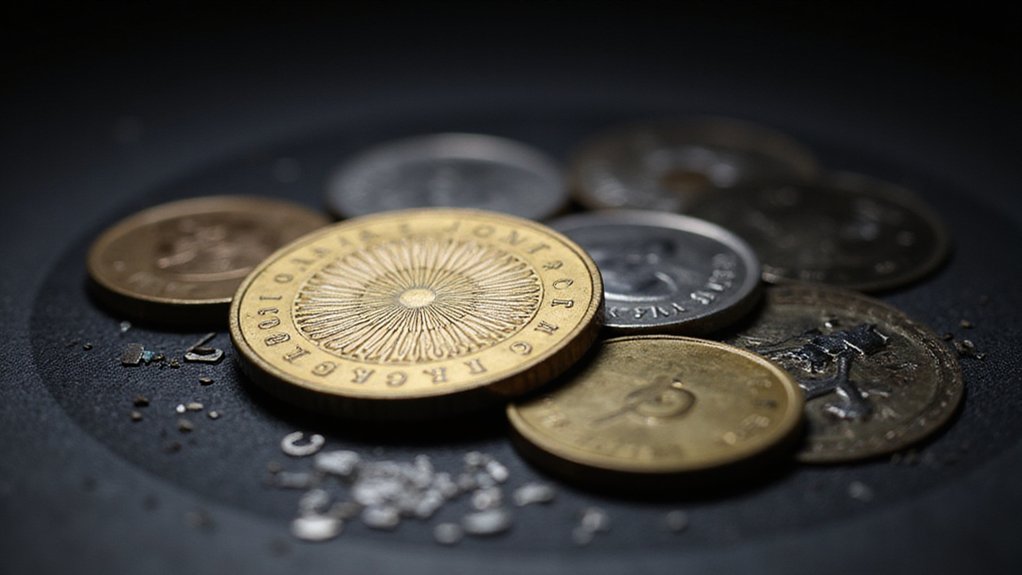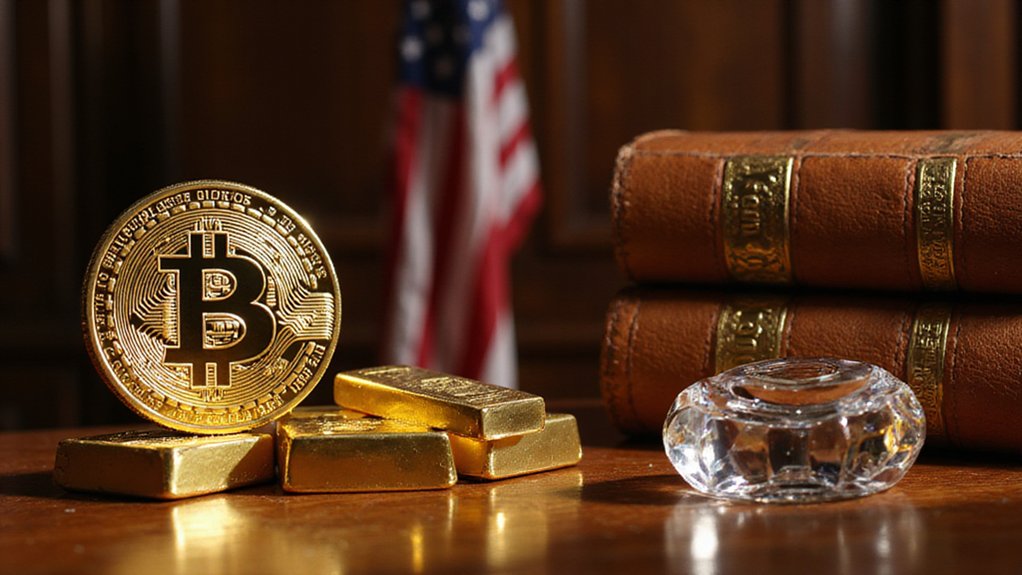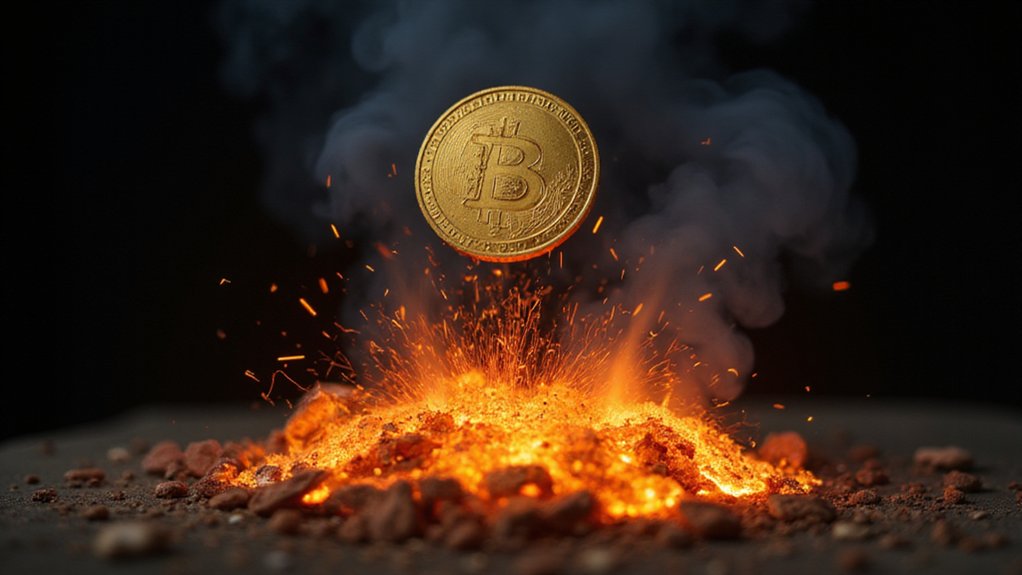Meme coins have evolved from internet jokes into speculative powerhouses with billion-dollar valuations. The 2023 watchlist includes established players (Dogecoin, Shiba Inu) alongside ambitious newcomers like Pepe, Floki, and Bonk. Success factors include celebrity endorsements, exchange listings, and community mobilization, though regulatory concerns loom. Investors should approach with caution, using security tools like Token Sniffer while acknowledging the fundamentally speculative nature of these assets. The deeper mechanics of meme coin movements reveal surprising market intelligence beneath the cartoon facades.
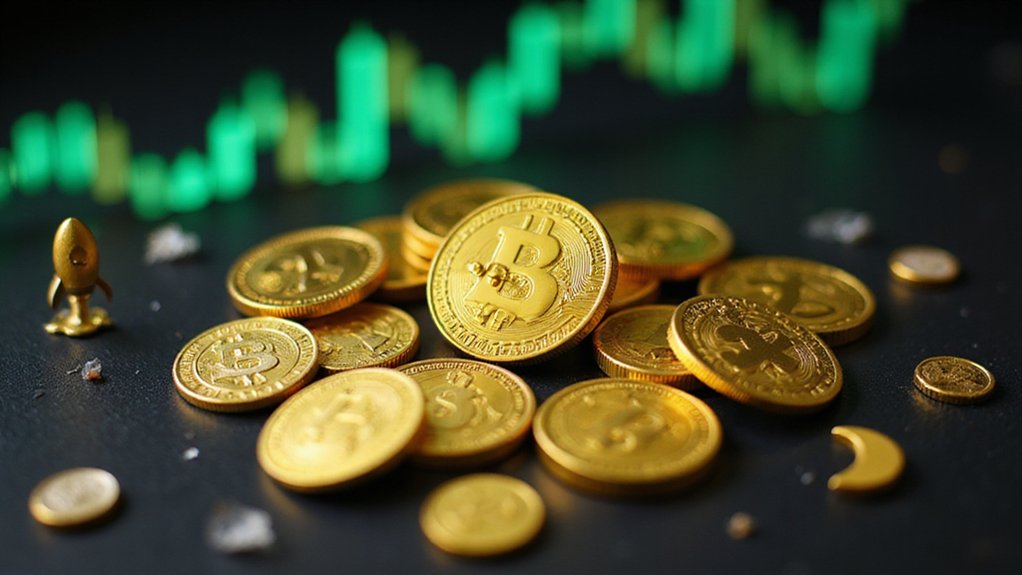
As the cryptocurrency market enters another tumultuous year, meme coins continue their improbable ascent from joke internet tokens to legitimate (if highly speculative) investment vehicles.
The phenomenon, characterized by high volatility and community-driven price action, has transformed digital assets inspired by internet humor into serious market contenders with multi-billion dollar capitalizations in certain cases.
Dogecoin remains the patriarch of this curious financial niche, having established the template that subsequent entrants have enthusiastically replicated.
Its younger competitor, Shiba Inu, continues to challenge DOGE’s supremacy through aggressive ecosystem expansion and consistent community engagement.
Meanwhile, newer entrant Pepe has demonstrated remarkable velocity in market penetration, leveraging its connection to a ubiquitous internet meme.
The success factors for these tokens extend beyond mere humor value.
Celebrity endorsements—particularly from tech luminaries with outsized social media footprints—can catalyze explosive price action, as evidenced by Floki‘s strategic association with Elon Musk’s canine companion.
Solana-based projects like Dogwifhat have experienced fast growth since launch, attracting substantial investor attention in recent months.
Technical analysis of these assets reveals patterns consistent with extreme speculative cycles, where moving averages and volume indicators often provide brief windows of predictability amid chaos.
For investors attempting to navigate this peculiar market segment, exchange listings represent critical inflection points, with inclusion on major platforms frequently presaging substantial appreciation.
Integration with NFTs and development of practical applications (however tenuous) provide narrative frameworks that sustain community interest through inevitable market corrections.
Bonk exemplifies the newer generation of these assets, characterized by faster development cycles and more sophisticated community governance mechanisms.
Regulatory considerations loom particularly large for this asset class, with compliance requirements potentially reshaping market dynamics as frameworks evolve.
Trading these assets demands acknowledgment of their fundamentally speculative nature.
Newcomers to meme coin trading should utilize security tools like Token Sniffer to identify and avoid potential scams before investing.
Projects like Dawgz deliver added investor confidence through fully audited security measures, demonstrating a growing emphasis on safety in the typically high-risk meme coin sector.
While technical indicators offer some guidance, the outsized influence of social media sentiment and community mobilization renders traditional analytical frameworks frequently inadequate.
The most successful participants maintain vigilant monitoring of social platforms, where price movements often materialize before appearing on charts¹.
¹Market participants would be wise to remember that FOMO frequently precedes substantial corrections.
Frequently Asked Questions
Are Meme Coins a Good Long-Term Investment Strategy?
Meme coins represent a conspicuous anomaly in investment theory—promising moonshot returns while fundamentally lacking intrinsic value mechanisms that traditionally underpin long-term asset appreciation.
Their extreme volatility, dependency on social sentiment rather than utility, and dismal survival rates (with most failing within months) render them categorically unsuitable for serious long-term portfolio construction.
While occasional specimens may defy gravity temporarily, conflating such statistical outliers with prudent investment strategy borders on financial self-sabotage.
How Do I Identify a Potential Rug Pull in Meme Coins?
Identifying potential rug pulls requires vigilance across multiple red flags.
Anonymous developers (conspicuously absent LinkedIn profiles), unaudited smart contracts, and liquidity that isn’t verifiably locked for extended periods should trigger immediate skepticism.
Examine GitHub repositories—dormant code repositories often precede abandonment.
Be wary of projects promising astronomical returns while lacking substantive utility.
Sudden spikes in trading volume without corresponding news or development milestones typically signal artificial manipulation rather than organic growth.
Community dynamics matter too; excessive deletion of critical questions often precedes exit scams.
What’s the Minimum Capital Required to Invest in Meme Coins?
Technically, investors can enter the meme coin market with as little as $10-20, though such minimal capital severely limits potential returns (despite the sector’s notorious volatility).
Most exchange platforms impose modest entry thresholds, while gas fees—particularly on Ethereum-based tokens—can eclipse the actual investment amount during network congestion.
Serious participants typically allocate $100-500 as starting capital, allowing for diversification across several projects while maintaining sufficient position sizes to justify transaction costs.
Can Meme Coins Be Staked for Passive Income?
Many meme coins offer staking opportunities through various platforms.
Dogecoin utilizes third-party services like Bybit Savings, while Shiba Inu operates through its native ShibaSwap exchange.
Yields typically range from 3-15% APY, though these returns must be weighed against substantial risks: smart contract vulnerabilities, exchange dependencies, and price volatility that can obliterate staking gains.
Savvy investors might compound rewards or diversify stakes across platforms while remaining vigilant about regulatory shifts in this notoriously capricious sector.
How Do Market Regulations Affect Meme Coin Values?
Regulatory pronouncements exert outsized influence on meme coin valuations, creating price volatility that defies conventional market logic.
The SEC’s 2025 non-security designation removes federal protections, amplifying both opportunity and risk. Without registration requirements, these assets experience dramatic swings following social media trends or regulatory statements.
Market participants navigate this precarious landscape where pump-and-dump schemes flourish unchecked, while state regulators attempt to fill enforcement gaps—creating a fragmented compliance environment that further complicates price discovery mechanisms.
